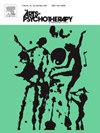Stress, anxiety, and Steampunk Art in autistic adolescents and young adults
IF 1.5
3区 心理学
Q3 PSYCHOLOGY, CLINICAL
引用次数: 0
Abstract
Art based programs have been implemented successfully with autistic children and youth, demonstrating significant benefits for communication, behavior, social skills, and emotion regulation. This study reports on the implementation and preliminary outcomes of a Steampunk art program for autistic youth, “Steampunkinetics”. The Steampunk art genre is grounded in technology, mechanics, creativity, divergent thinking, and attention to detail and therefore would provide a strengths-based platform for building on skills and interests of autistic youth. This study aimed to evaluate the impact of Steampunkinetics on participants’ experiences of anxiety, stress, peer relationships and self-esteem. During Steampunkinetics participants engaged in a range of art-based activities incorporating the Steampunk genre. Participants completed standardized self-report measures to evaluate the impact of the program, and a focus group was conducted with parents to gather feedback on their child’s response to the program. Findings indicated a significant decrease in anxiety and stress, and participants rated the program as enjoyable and interesting. No significant change was observed in self-esteem or peer relationships, although the majority of participants reported developing friendships during the program. Qualitative analysis of the parent focus group identified several themes which reflected those seen in the quantitative data. These findings are an important contribution given the mental health benefits of art-intervention programs and the need for validated programs designed for autistic youth.
自闭症青少年和年轻人的压力、焦虑和蒸汽朋克艺术
以艺术为基础的课程已经在自闭症儿童和青少年中成功实施,在沟通、行为、社交技能和情绪调节方面显示出显著的好处。本研究报告了一项针对自闭症青少年的蒸汽朋克艺术计划的实施和初步结果,“蒸汽朋克动力学”。蒸汽朋克艺术流派以技术、机制、创造力、发散思维和对细节的关注为基础,因此将为自闭症青少年的技能和兴趣提供一个基于优势的平台。本研究旨在评估蒸汽动力对参与者焦虑、压力、同伴关系和自尊体验的影响。在蒸汽朋克运动期间,参与者参与了一系列结合蒸汽朋克流派的艺术活动。参与者完成了标准化的自我报告措施,以评估该计划的影响,并与家长进行了焦点小组讨论,以收集他们孩子对该计划的反馈。研究结果表明,焦虑和压力显著减少,参与者认为该计划令人愉快和有趣。在自尊和同伴关系方面没有观察到明显的变化,尽管大多数参与者报告说在这个项目中建立了友谊。对家长焦点小组的定性分析确定了几个主题,这些主题反映了定量数据中的主题。这些发现是一个重要的贡献,因为艺术干预项目对心理健康有益,并且需要为自闭症青少年设计有效的项目。
本文章由计算机程序翻译,如有差异,请以英文原文为准。
求助全文
约1分钟内获得全文
求助全文
来源期刊

Arts in Psychotherapy
Multiple-
CiteScore
3.20
自引率
11.10%
发文量
66
期刊介绍:
The Arts in Psychotherapy is a dynamic, contemporary journal publishing evidence-based research, expert opinion, theoretical positions, and case material on a wide range of topics intersecting the fields of mental health and creative arts therapies. It is an international peer-reviewed journal publishing 5 issues annually. Papers are welcomed from researchers and practitioners in the fields of art, dance/movement, drama, music, and poetry psychotherapy, as well as expressive and creative arts therapy, neuroscience, psychiatry, education, allied health, and psychology that aim to engage high level theoretical concepts with the rigor of professional practice. The journal welcomes contributions that present new and emergent knowledge about the role of the arts in healthcare, and engage a critical discourse relevant to an international readership that can inform the development of new services and the refinement of existing policies and practices. There is no restriction on research methods and review papers are welcome. From time to time the journal publishes special issues on topics warranting a distinctive focus relevant to the stated goals and scope of the publication.
 求助内容:
求助内容: 应助结果提醒方式:
应助结果提醒方式:


